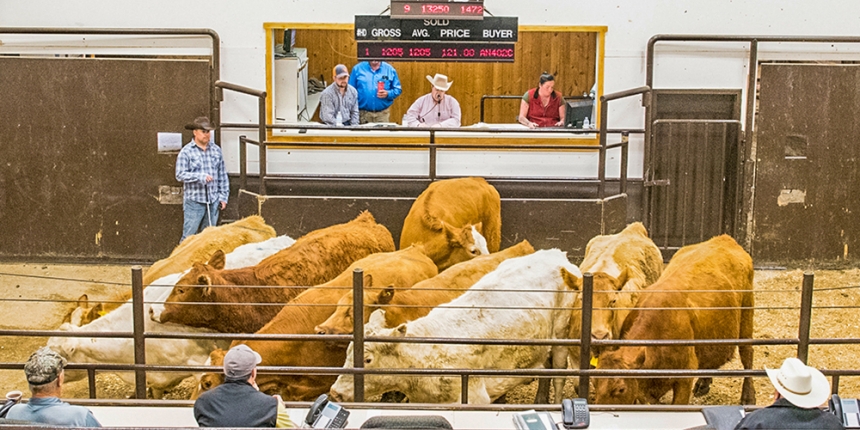Fri, 07 Oct 2022 11:05:44 CDT

KC Sheperd, Farm Director, is visiting with Bob Rodenberger, a partner with Stockman Oklahoma Livestock Marketing, as he talks about this week’s cattle market conditions.
“We started out with bigger-than-average runs this time of year,” Rodenberger said. “Of course, our cow runs are bigger everywhere.”
On Monday, Rodenberger said the market was a couple of dollars cheaper for feeder steers going straight to the feed yard. Stocker cattle, Rodenberger added, are under pressure.
“There is a big gap in the very front-end calf to just the average calf, price-wise,” Rodenberger said. “There is a gap between the front-end calf that has had all the bells and whistles 60 days weaned, but that same calf that is just like him without all the bells and whistles if all the quality is there- there is a difference. Not the difference we have seen back in the spring. Right now, it is just finding somebody that wants one and has a place to take one.”
In the last two weeks, Rodenberger said we have taken every bit of 20 to 25 dollars off calves coming off cows weighing under 650 lbs. and there is nowhere to put them. The grow yards are full, he added, and it is difficult to find somebody who wants to take them.
Rodenberger said if we can get some rain, there can be some late wheat grazing, but that will need to happen promptly. Wheat is all over the board, he added.
“Killing cows are 10 dollars cheaper, 15 dollars cheaper than they were two weeks ago, and that is not going to change,” Rodenberger said. “Cow runs are large everywhere.”
From 2019 through 2021, from June through September, Rodenberger said around 4,000 cows were sold on average.
“In 2022 at this time from June to September, we are at 11,000 cull cows,” Rodenberger said. “That is how much we have ramped up the culling stage. It is bigger in different parts of the state.”
With these dry conditions, Rodenberger said the culling of the cows is not going to change.
“We know from January through August next year, the availability of stockers is going to be down considerably,” Rodenberger said. “That doesn't mean they are out of the system; they are just not going to be available for the buyers because they are already in a grow yard or in the second or third hands that are going to put them somewhere in a feed yard in a timely fashion.”
A very small percentage of the industry that has pivots, silage, and personal grow yard facilities, Rodenberger said, is buying and weaning calves and holding them over.
“I do not think that we are going to start buying back cows in April,” Rodenberger said. “We have got to get to April to know if we are going to get rains to have hay to cut for next year. We have got to rebuild the whole process from the grass to the cow.”
Click the LISTEN BAR below to listen to KC’s full conversation with Bob Rodenberger about the current cattle markets.


















